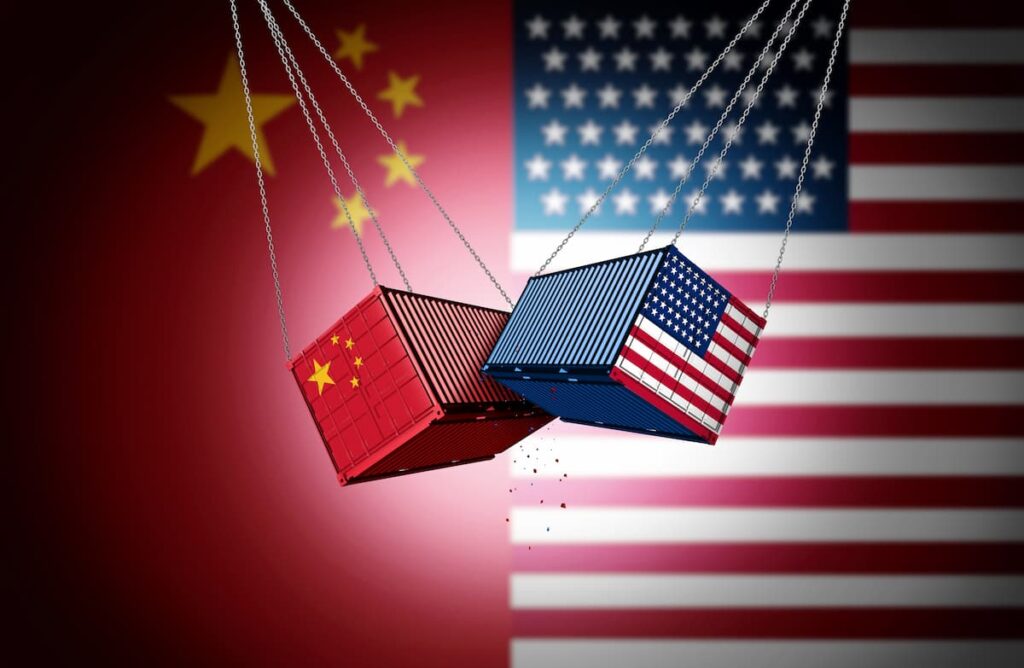Markets Rally After Dramatic US-China Trade De-escalation
U.S. markets surged Monday as President Donald Trump’s administration and Chinese officials announced a sweeping reduction in tariffs, easing trade tensions that had rattled global markets for over a month. Following closed-door meetings in Geneva, both nations agreed to slash tariffs by 115 percentage points, sending a strong signal that the worst phase of the trade war may be over.
The Dow Jones Industrial Average jumped more than 1,000 points, or 2.5%, while the S&P 500 climbed 2.85%. The tech-heavy Nasdaq soared 4%, buoyed by renewed investor confidence and expectations of fewer supply disruptions.
This move comes after Trump’s controversial “Liberation Day” announcement on April 2, which imposed a 10% blanket tariff on most imported goods and sharply increased tariffs on Chinese imports to 145%. In retaliation, China hiked tariffs on U.S. products to 125%, bringing trade between the two countries to a near standstill.
Treasury Secretary Scott Bessent and U.S. Trade Representative Jamieson Greer led the talks, which yielded what Bessent called a “tough but respectful” agreement. “We came with a list of problems we were trying to solve, and I think we did a good job on that,” he told CNBC. The agreement also includes a safeguard mechanism to prevent future tariff escalations.
Recession Fears Ease as Investors Embrace Risk
The de-escalation had an immediate impact on investor sentiment. Deutsche Bank strategist Henry Allen noted in a report, “There are still lots of factors pointing away from a global recession, and this morning’s news of lower U.S.-China tariffs adds to that evidence.” Wall Street’s Fear and Greed Index showed a sharp shift toward optimism, and the CBOE Volatility Index dropped 10% to its lowest point since March.
The U.S. dollar rose 1.2% against a basket of currencies, while oil prices rebounded—West Texas Intermediate crude gained 3.4% to reach $63 a barrel, and Brent crude climbed 3.2% to $66. Meanwhile, investors pulled away from safe-haven assets: gold fell 2.5%, and U.S. Treasury prices dropped, pushing the 10-year yield above 4.45%. The Japanese yen also declined by 1.5%.
Technology and consumer goods stocks were among the top performers. Apple gained 7%, Tesla 7.7%, Nvidia 5.1%, Amazon 8%, and Intel 4.1%. Luxury brands also rebounded, with LVMH rising 7%, Burberry 6%, and Hermès 4%. Automakers Stellantis, General Motors, and Ford saw gains of 9%, 4%, and 2%, respectively.
Structural Shifts and the Future of u.s. Trade Policy
Despite the positive market response, officials emphasized that the easing of tariffs does not represent a full policy reversal. “This is just a pause,” said Bessent, who clarified that the tariff on Chinese imports has been reduced from 34% to 10%. The administration’s broader goal remains a strategic decoupling in key sectors such as semiconductors, critical medicines, and steel.
“What we do want is a decoupling for strategic necessities,” Bessent said. “We realized that efficient supply chains were not resilient supply chains. So, we are going to create our own.”
The Trump administration is also pushing to eliminate non-tariff barriers that it views as discriminatory toward American firms operating abroad. Bessent indicated that the administration will continue working toward a fairer international trade system, particularly in key export markets.
A Political and Economic Turning Point
Kevin Hassett, Director of the National Economic Council, called the development a “historic fresh start” in U.S.-China relations. He praised the concessions obtained from both China and the United Kingdom, highlighting expanded access for U.S. beef and a softening of restrictions on American companies in China.
“This clears up a lot of the potential for supply disruptions,” Hassett said. “It’s really a fresh start in the relationship.”
Hassett dismissed concerns that the shift contradicts Trump’s prior trade stance. “If we didn’t work out a good deal, we’d be fine,” he said. “We weren’t selling much to China anyway. We could buy that stuff from other countries, or make it ourselves.”
The agreement marks a significant policy pivot just weeks after Trump argued that eliminating trade with China would benefit the U.S. economy. Now, with the prospect of supply shocks diminished and markets stabilizing, the administration appears focused on maintaining a delicate balance between economic nationalism and pragmatic diplomacy.



